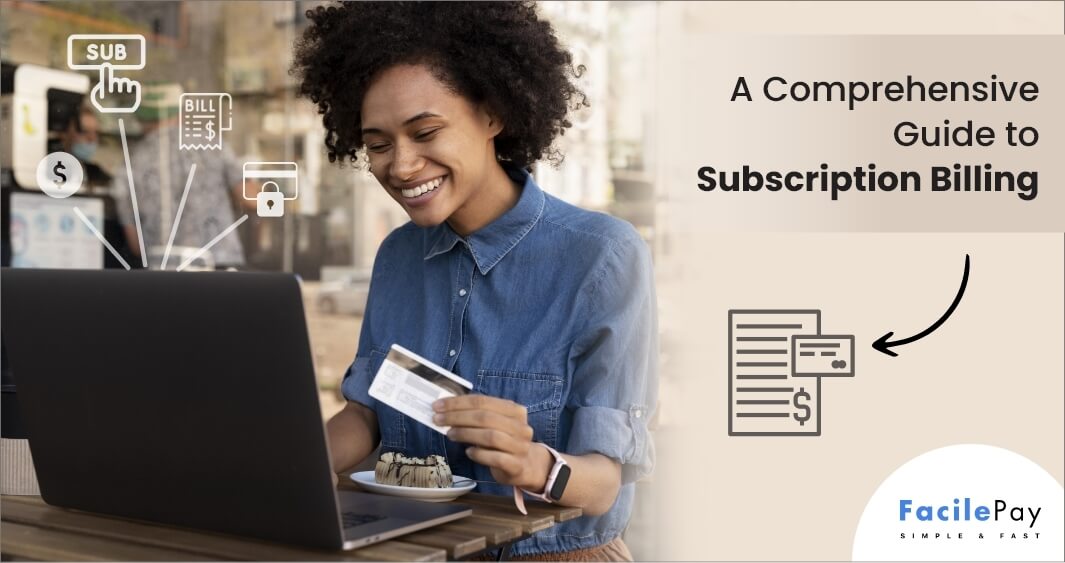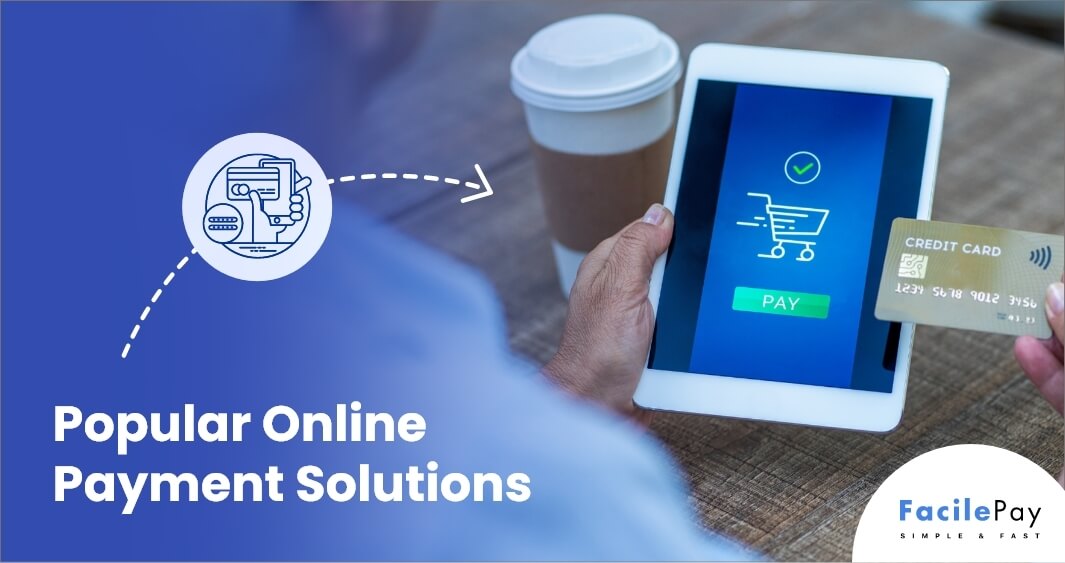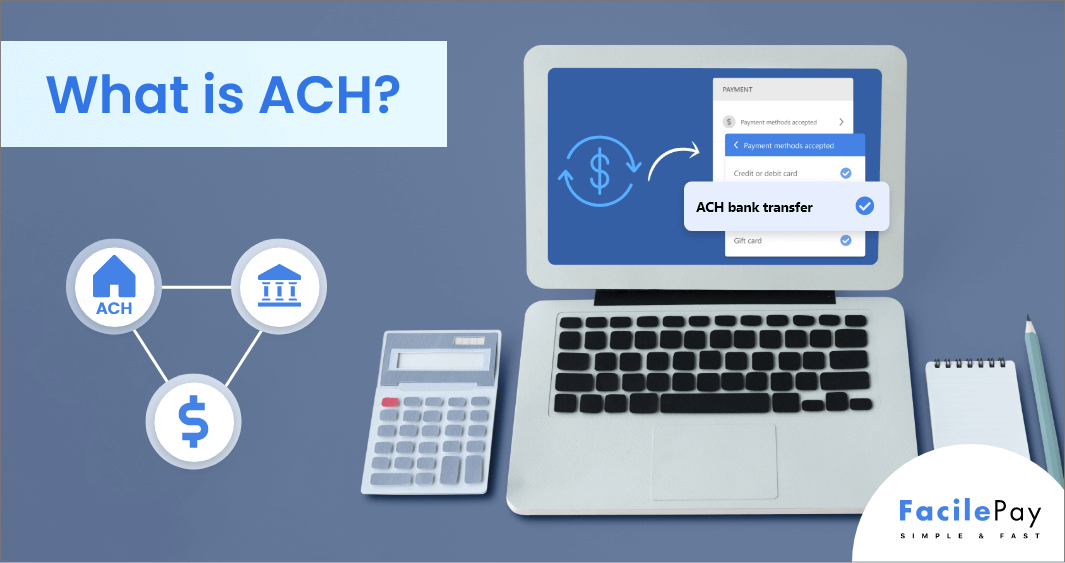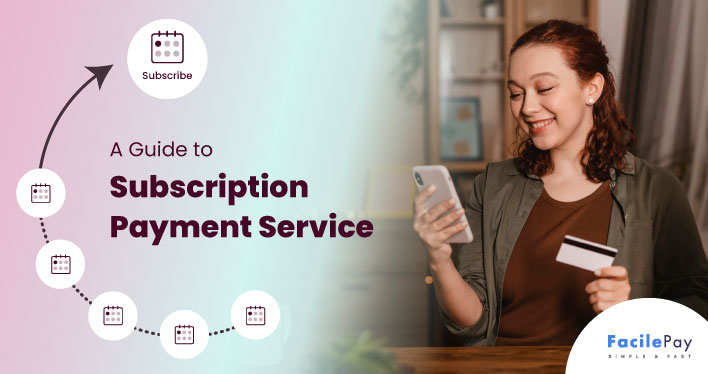- Subscription billing is a payment model where customers pay a recurring fee at set intervals to receive a product or service.
- Subscription billing helps businesses improve customer retention and revenue predictability.
- Businesses need to consider various factors such as pricing, payment methods, and billing cycles when implementing a subscription billing system.
- Subscription billing can be facilitated through various software solutions, including SaaS billing platforms and payment gateways.
📝Key Takeaways:
As a SaaS business owner, you always look for new approaches and opportunities to bring in new customers and retain them for longer relationships.
You already have invested your time, money, and efforts in developing a product. Now, you might want to maximize the earnings from your investment. This is when you encounter questions like below.
- How to maximize cash flow for business and create a streamlined revenue stream
- What strategy can help penetrate the market competition and achieve business growth faster?
- How to create a loyal customer base for the product or service offerings
If you are dealing with these above questions, then this is the right blog for you to clear your doubts.
To maximize your business cash flow and gain more customers with longer value, you need to strategically customize your pricing structure for the subscription billing model.
This is a dedicated blog for you to understand what is subscription billing and learn how to leverage it.
In just 12-15 minutes, this blog will help you learn:
- What is subscription billing and its types? [+examples]
- The top benefits of subscription billing
- Differences between subscription billing and one-time purchase [a short comparison]
- The best subscription billing systems in the market [+key requirements to consider]
Ready for the knowledge? Let’s get started.
Contents
- What is Subscription Billing?
- 2 Examples to Understand Subscription Billing
- 7 Types of Subscription Billing Models [+3 Reasons to Use this Model]
- Subscription Billing Vs One-Time Purchase
- 6 Key Benefits of Subscription Billing
- 10 Key Requirements to Consider for Subscription Billing Software
- Which is the Best Subscription Billing System in the Market?
- Frequently Asked Questions About Subscription Billing
- Get Started with Your Subscription Billing Services
What is Subscription Billing?
Quick Answer:
Subscription billing is a process to bill customers automatically at set intervals for the use or access of a product or a service having flexible pricing tiers. Subscription models offer a customizable checkout plan to customers. This billing model works best to establish longer customer relationships.
With subscription billing, a business can perform better customer relationship management and create a predictable revenue stream. This pricing model creates the scope for businesses to experiment with their costing plans for the product or service offered. This helps to penetrate the market competition with flexible pricing models.
Subscription billing brings recurring revenue to the business. But, when working on the pricing structure of this model, you need to identify a few aspects and get some questions answered. Below are the identifying factors to consider.
- Who is your target customer base?
- What is the average ideal age of your target customers?
- How are your customers located?
- What subscription product/service do your customers need to be billed for?
- What is the billing frequency for the subscription?
- How to collect payments for your subscription business
- How does revenue recognition work for you?
Listing down answers to these questions will help you create a competitive pricing strategy for subscription billing. Explore some of the examples to understand this business model or pricing strategy better.
2 Examples to Understand Subscription Billing
Subscription businesses should have flexible and dynamic billing solutions with the capability of handling complex pricing schemes. You should be able to deploy multi-dimensional pricing for unique customer needs with your subscription plan. Below are examples of some known brands for whom a subscription billing solution has worked wonders.
-
Dollar Shave Club
Dollar Shave Club is one of the top brands in the market leveraging the subscription box concept. This retail business selling consumables has built a loyal and large customer base by customizing its business model with dynamic billing solutions. The core areas they focused on while customizing the billing structure and the product are convenience for customers, affordability, and transparency. With a small pricing value of $9, Dollar Shave Club won the market.
-
Microsoft Office 365
Microsoft Office 365 is a SaaS business model that has doubled down on its revenue stream with subscription billing. Customers get to access Word, Excel, PowerPoint, and several other MS softwares at $100 per year or $10 per month. The pricing approach of Microsoft for its Office 365 suite creates opportunities for users to buy the access upfront with discounts while still keeping it available at small subscription rates. The strategy has got Microsoft to earn huge customer retention and grow exponentially.
Other known brands leveraging subscription billing include FitBit, Codecademy, and LinkedIn eLearning Subscriptions.
Now, you know what subscription billing is with examples of top brands leveraging it. Let’s understand the different types of subscription billing models.
7 Types of Subscription Billing Models [+3 Reasons to Use this Model]
Not long ago, billing and payments for products or services use to be straightforward. But, time has changed and the simple pricing model is slowly losing its market. With recurring payments for subscription plans gaining momentum, businesses have started experimenting with pricing structures to gain a competitive edge. This led to the introduction of several types and formats of subscription billing and recurring payments. To be precise, there are seven major types of subscription billing models. Let’s explore them in detail.
-
Fixed Flat Rate Subscription System
This is a type of billing system, where customers are charged a fixed price or fee for the access or use of products/services. This is the most straightforward subscription pricing model to manage by businesses. For example, newspaper services follow a fixed flat rate recurring billing format. You will receive a newspaper at a fixed recurring cost on an ongoing basis.
This pricing structure is best for B2C businesses. -
Tiered Pricing Structure
This subscription type involves billing customers based on the package-based payment model (like basic, advanced, and enterprise). Customers pay based on the chosen package with a predefined set of features on a fixed schedule. If someone wants to access more features or services, they need to upgrade to a higher plan. This is among the popular subscription billing and recurring payment collection methods used by SaaS businesses.
For example, Evernote and Unbounce follow a tiered subscription billing structure.
This recurring billing model works best for both B2B (like Unbounce) and B2C (like Evernote) businesses. -
Freemium to Subscriptions
A freemium is yet another popular subscription type that aims to prove the value of the services or the platform features to its customer base with risk-free trials. Customers can anytime upgrade their subscription to a higher pricing tier to avail additional features or services. Also, here the user can access the product or service for free with limited features for as long as they want.
For example, Zapier is free to use with limited features forever. However, users can anytime upgrade to higher subscription tiers.
This subscription pricing strategy works well for both B2B (like Trello) and B2C businesses (like Evernote). -
Limited Promotion to Subscriptions
This is a subscription billing strategy used by businesses to prove the value of the services or product to target customers with free trials for a limited period of time. This is quite similar to the freemium model. The only difference is that here the offer is for a limited time period. Once the trial period is over, charging customers for the billing period will start automatically. For example, Crazy Egg offers a free trial for each of its subscription plans. Users can easily trial and evaluate the value and based on it continue the subscription plan further.
This is a subscription billing strategy leveraged mostly by B2B businesses (like Crazy Egg). -
Pay-as-you-go Subscriptions/User-Based Pricing Plans
This is a recurring billing structure with subscription plans bifurcated based on the number of users accessing the product or its set features. For example, Hootsuite is a platform with billing cycles and pricing determined based on the number of users accessing it. Like, the professional package of Hootsuite can be used by 1 person while a business plan gives access to 5 users.
This subscription strategy is best for SaaS businesses (like monday.com) and entertainment providers (like Netflix). -
Overage Subscriptions/Usage-Based Subscription Model
This is a type of subscription billing model with a consistent or predefined base fee for feature access. This billing structure makes the customers pay extra for using more than allocated in the base fee plan. For example, mobile postpaid plans follow overage or usage-based pricing structures. Customers have to pay a basic fee on each billing cycle, irrespective of consumption. The more usage, the higher the bill.
This subscription type works best for B2C businesses. -
Custom Subscription Billing Systems
This is a subscription billing type where the pricing is decided based on the specific features or service requirements of the customers. For example, Typeform offers a custom pricing plan with its enterprise package. Users with custom requirements can contact sales and get the subscription with the features and pricing desired.
This type of subscription billing works best for B2B businesses. - Subscription billing offers flexibility to customize pricing plans or structures as diversified offerings that help zero down on target customers efficiently.
- Subscription billing helps build a strong brand value by putting customers at the center of decisions with their paying capabilities and service needs.
- Subscription billing broadens the scope to improve offerings and make a better business proposition based on the behaviors and attitudes of the target audience.
-
Provides Effective Strategy to Penetrate the Market and Get More Customers
The subscription model is a great way for businesses to break the high price barriers in the market and earn more customers. With subscriptions custom created as per the customer’s payout capabilities, you as a business can get more customers opting for your products/services. This helps the business earn consistent revenue, scale faster, and grow as desired. For example, Adobe. The business moved to subscription billing to make accessing its products (like Photoshop and Premier Pro) affordable for everyone while also gaining good profits.
-
Offers Better Management of Risks with Payments Taking Place on Autopilot
Automated processing of billing and payments with secured gateways makes subscriptions risk-free from manual processes.
Having a recurring billing system in place for your subscription type, you can better manage your risks with failed payments or missed payouts. Automation of billing and payments eliminates the risks from manual processes and brings efficiency to the system. You are able to process billing and payments in a timely manner with automatic reminders to customers for transparency and to avoid payment failures costing you unnecessarily.
-
Enables Simpler Payment Process Helping Save Time
You can maximize your focus on other important business areas with payments getting simpler with automation. With a billing platform automating subscriptions, you are able to save a lot of time spent on streamlining the accounting system for your business. Subscription billing and payments bring stability and efficiency to business operations.
-
Stabilizes Revenue Helping Scale and Grow Faster
Subscriptions makes you worry-free as a business with consistent revenue flow. You can predict your annual profits based on the existing subscription payment cycles. This helps you attain stability and focus on other aspects of growth. You can maximize your product/service quality, operational efficiency, and marketing/sale strategies with the sort of stability subscriptions bring to your business.
-
Provides Budgeting Outlook Enhancing Business Decisions
Using a subscription billing software solution for processing monthly or annual billing helps you gain insights on revenue flow and customer churns. A billing platform or subscription management software with advanced features can help track customer journeys and payment cycles providing useful budgeting insights. This works great to create strategies/plans enabling better business decisions.
-
Enable Businesses to Scale and Develop Custom Offerings
With subscriptions, you can create custom offerings for the products/services making scope for your business to grow. For example, Dollar Shave Club. The business maximized its revenue and scaled at lightning speed by leveraging subscriptions. The flexibility that subscriptions bring makes it the best choice for businesses today.
-
Provide Feature Choices to Fit Your Subscription Model
A good billing software or processor will provide you with feature choices to fit your type of subscription business. For example, some might need a simple billing and payments feature with fixed rate pricing while others may need customized billing for different customers with a convenient and easy-to-use recurring payments module. A great billing platform for subscriptions gives freedom and flexibility with features. There are even custom features provided by some providers to ensure the need for a subscription business gets fulfilled.
-
Go to the Market Faster
A great subscription billing software allows you to go to the market faster. This means you don’t have to get into complex setup processes to start your subscription billing. A simple and convenient setup process is a must for you to look for in a billing and payments software.
-
Enable Accept Various Payment Methods
Many businesses lose customers for not accepting different payment methods. You as a business should ensure that your subscription billing software accepts all kinds of payment methods like credit cards, debit cards, ACH payments, online payments, and more.
-
Manage Customers at an Individual Level for the Subscription Plans
A billing and payments software must have the feature to accommodate individual customers with their subscription plans and business models. There are different subscription types in the market with more and more businesses leveraging these pricing structures using custom solutions. Customization in the existing subscription type or format helps to make a unique appeal to the target audience enabling them to earn more customers. Therefore, your software or processor for subscriptions should have the ability to process your unique individual needs.
-
Charge Customers on a Recurring Basis at Scheduled Billing Intervals
You can’t miss out on automation when choosing software for processing subscriptions or recurring payments. Automation of subscriptions makes processes simpler and more efficient for the business. You should ensure that the platform or processor you choose can accommodate charging customers on a recurring basis on autopilot mode.
-
Enable Simple Billing Experience and Customer Management
Your customers are valuable to your business. You need to ensure that the software you use for processing subscriptions provide a simple billing experience to your customers. Additionally, it should help you with effective customer management solutions for billing and payments. Having software or processor that helps you enrich your customer’s experience with you is a win-win for the business.
-
Provide Self-Service Workflows & Capabilities
A good and reliable subscription billing software provides self-service workflows for a quick resolution to common issues or queries. This removes a lot of back and forth and waiting time for a response from a customer care team. You can quickly get the support you need with these workflows in place.
-
Enable Quick Pricing Experiments as a Service Offering
Your software for subscriptions should allow quick pricing experiments with customizations in the plan itself or with offers or discounts. Business models leveraging subscriptions make experiments to understand the behavior of the customer base for a particular offer or customization as a service offering. This helps the business find ways to beat the market competition and create a good revenue flow. Therefore, if your business aims to keep growing with experiments in the subscription plans provided, then look for a software solution that has features to accommodate the same.
-
Provide On-the-Go Analytics for Subscription Management
Always choose a software that offers complete tracking and analysis for your subscriptions and payout cycles. Analytics or data-based tracking mechanism helps you to monitor the performance of your subscription plan and understand the efficiency of it in earning the desired revenue stream and customers. You can also efficiently monitor and manage customer churns with these data or analytics. So, look for a software that helps you with proper data for efficient subscription management.
-
Allow Seamless Third-Party Integrations
When looking for a software for processing subscription billing, you should consider reviewing the possibilities with third-party integrations. As a subscription business, you may need to create a custom billing or payment structure where you need a third-party integration for getting the desired feature. Therefore, you should ensure that the processor or billing software you choose allows a vast range of third-party integrations into its system.
- Recognized by G2 as a leader spring 2022 with a 94% recommendation rate and 4+ ratings
- Have reach in 30+ countries
- Helped ‘Yousign’ to enter a new market that drives 15% MRR
- Powered MakeSpace to launch a B2B model overnight
- Automates order-to-revenue lifecycle
- Drives decisions with 360° revenue reporting
- Secures subscription experiences
- Accept payments in multiple methods
- Helps with tax calculation and management
- Enables businesses with efficient chargeback management solutions
- Helps with on-the-go analytics and reporting with efficient churn management and customer retention solutions
- Winner of IDC’s 2020 SaaS CSAT award for subscription billing
- Rated 4+ by Capterra, GetApp, Google Play, and Software Service
- Integrated subscription billing suite that includes Stripe, PayPal, Authorize.Net, Office 365, ICICI Bank, Google Workspace, Slack, and more
- Empowers business across the globe with custom subscription billing and management services
- Makes subscription billing and payments simpler with automation
- Support various payment methods
- Helps provide subscription metrics
- Recognized by Forrester, IDC, G2 Crowd for subscription billing solutions
- Enable easy integration with CRM systems like Salesforce and HubSpot, financial systems like NetSuite and QuickBooks, and other third-party systems include Zapier
- Power business with detailed data and analytics
- Provide offer management services for subscription billing
- Works best for B2B SaaS businesses
- Helps mix and match individual components and create custom subscription pricing packages
- Accept payments via credit card, ACH transfers, and direct debit — always in the local currency
- Zoom has experienced a triple-digit YoY revenue growth with Zuora as a trusted partner for their subscription-based business (Scaled 30x from 10 million to 300 million in less than 6 months)
- Trusted by popular brands like Bloomberg Media and Zendesk
- 1000+ companies trust Zuora to power their subscription business
- Helps pursue any growth strategy with flexible pricing, packaging, and discounting
- Helps automate subscriptions with smart approaches
- Helps with a knowledge center to enable quick solutions to common queries or issues
- Simplified payment collection process for subscription plans
- Helps provide offers on subscriptions and refresh pricing strategy
-
How does subscription billing work?
Subscription billing work as per the following steps.
Step 1. You create a checklist of your requirements for subscription billing and payments.
Step 2. You choose a billing software that best fits your requirements.
Step 3. You set up your subscription billing and recurring payments in the chosen software.
Step 4. You are all set to get started.
Step 5. You keep customizing your subscription plan as per your revised strategy.
-
Which are the best practices for efficient subscription billing?
The best practices for efficient subscription billing are as follows:
- Make security and compliance a priority
- Keep your subscription policies transparent
- Make cancellations easier for subscriptions
- Manage involuntary customer churns with automated retry processes
- Accept payments in multiple methods
- Make payments simpler for end users
-
What businesses do wrong about subscription pricing?
Subscriptions are a great way to maximize on revenue. However, if done incorrectly the same can backfire on your business. Below are the things you should never do with subscription pricing.
- Basing the pricing of the subscriptions based on ‘gut feel’ over data
- Updating or customizing subscription pricing randomly and without a concrete strategy in place
- Overlooking a core revenue driver
-
Why choose a pre-built subscription billing software than developing a custom tool for automated billing?
A pre-built subscription billing software helps you streamline your billing and payments in less time and cost as compared to developing a custom software. Below are the primary reasons that makes choosing a pre-build subscription billing or payments software a better option.
Developing a custom software for subscriptions is:
- Sensitive to time and budget
- Not pre-configured to manage expanding customers
- Not configured with the latest security and compliance standards
- A headache for upgrades and maintenance for optimal performance as per the needs
-
Which are the best-suited business models for subscription billing? B2C or B2B?
Both. Subscription billing and payments strategy can be adapted by any industry vertical whether B2C or B2B. However, the type of subscription model chosen has to be precise, matching the market segment and end-user requirements.
Now, you know the different types of subscription billing leveraged by businesses. Before moving ahead, let’s quickly get an overview of the top reasons that makes subscription pricing a top preference for businesses.
Reasons that Makes this Model the Top Preference for Businesses
Till now, you have got the basic idea of subscription billing. Explore a short comparison between subscription billing vs one-time purchases for more clarity.
Subscription Billing Vs One-Time Purchase
As a business owner, you need to have utmost clarity with your pricing approach and business model for maximized results. In this context, you should be able to clearly bifurcate and compare subscription billing vs one-time purchases. You should have a defined reasoning for choosing one approach over another when it’s about the pricing models.
Refer to the below table for a quick overview of the comparison factors between subscription billing and one-time payment options.
| Subscription Billing | One-time Purchase |
|---|---|
| Predictable Cash Flow: Your business can have a predictable and recurring revenue flow helping scale and grow faster. | Faster Revenue Recognition: Your business can achieve faster revenue flow enabling you to earn lump-sum amounts at a go. |
| Automated Recurring Billing & Payments: You eliminate errors from manual entries for bulk processing of invoices for subscriptions with automated payments. | One-off Billing and Payments: You can process invoices and handle errors easily and efficiently for your in-store business. |
| Better Churn Management: You can track and monitor customer churns and work on a strategy to bring them back. | Risk-free Customer Management: Your business closes a deal in single transactions eliminating the risks of customer churn. |
The above comparison is for you to understand the basic differences in approach with reference to its benefits. Like, subscription billing is great for businesses looking for a predictable revenue stream with automated payments, on the other hand, a one-time purchase is mostly for in-store businesses looking for short-term profits. You have to decide the best pricing and payment model based on your business type, structure, and end goal.
Despite both subscription billing and one-time purchases having benefits unique to them, businesses of all types and sizes are now willing to leverage subscription models. Let’s quickly get an overview of the benefits of subscription billing to understand why businesses are willing to move to it.
6 Key Benefits of Subscription Billing
For businesses, a smart pricing strategy can do wonders to double down on growth and profits. Subscription billing is one such pricing method with ample scope for businesses to maximize their revenue with higher customer retention rates leading to faster growth. Below are some core benefits of subscription billing with a recurring payment structure that you as a business should consider.
With these six benefits, you have learned how subscription billing and payments can help your business grow. Additionally, the benefits also emphasize the need for a good subscription billing software. But, what goes for the best subscription billing software? Explore the key requirements to consider for a reliable subscription billing software from below.
10 Key Requirements to Consider for Subscription Billing Software
To leverage subscription billing to its maximum, you need to have a good billing software for processing recurring payments for your subscription type. But, how you will know about the checklist to follow for the best subscription billing software? To help you get a direction for choosing the right billing platform for your subscription business, below are some of the key requirements mentioned. These requirements will work for you as a checklist to follow when choosing a subscription billing software.
Now you know the requirements to consider when choosing the right subscription billing and payments software. Let’s have a look at the best subscription billing systems in the market right now fulfilling the above checklist.
Which is the Best Subscription Billing System in the Market?
The answer to this lies in your unique requirements. The best always depends on the specific needs of a business for the subscription model. To help you get started, below are the best billing tools or softwares mentioned for subscription businesses fulfilling the above key requirements.
| Logo | Subscription Billing Software | Key Brand Highlights | Benefits |
|---|---|---|---|
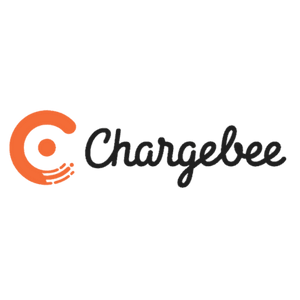 |
ChargeBee |
|
|
 |
Zoho Subscriptions |
|
|
 |
Chargify |
|
|
 |
Zuora Billing |
|
|
With this above table, you have gained the needed overview of the best subscription billing systems in the market. To help you get more clarity, below are some frequently asked questions answered.
Frequently Asked Questions About Subscription Billing
Get Started with Your Subscription Billing Services
Ready to get started with subscription billing? The above article aimed to help you with all the information needed to get started with subscriptions (billing + payments). No doubt, you can maximize your revenue flow and customer retention with subscriptions. However, processing recurring billing for subscriptions needs you to be aware of the various aspects to ensure that you are using the pricing strategy in the best possible manner. This blog tried to cover topics that will help you gain that information and knowledge.
Nevertheless, you can only double down on the scope with subscription billing and payments, when you use a good software or processor. If you want a simple payment processing system to manage your subscriptions, then consider using Facilepay. This is the simplest and easy-to-use payment processing app for subscription businesses to process recurring payments.

Rakesh Patel, the founder and CEO of FacilePay, brings 28 years of IT experience in payment automation technology, business strategies, operations, and information technology to the table. With his extensive knowledge and expertise, he has created a trustable solution that helps to accept payments online. This has helped businesses of all sizes to receive payments quickly and securely. His commitment to simplifying the payment process has led FacilePay to be an ideal choice for businesses. His aim is to provide a seamless payment solution for various payment types, including e-commerce, subscriptions, and online donations. Read More
